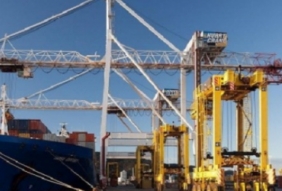
Posted on June 9, 2016
By Rosel Labone, stuff
CentrePort has confirmed the possibility of material from its proposed harbour dredge being used for the Wellington Airport runway extension.
The port company is applying for consent to dredge a seven-kilometre channel to allow bigger ships through the harbour entrance, and to deepen the area around the Thorndon container wharf.
The dredged material, enough to fill a million concrete trucks, would then be dumped at two sites and potentially be used for the runway extension.
CentrePort spokeswoman Jenni Austin said there had been discussions with the airport, but the two projects were still in the process of seeking resource consents.
Wellington Airport communications general manager Greg Thomas said CentrePort’s material was “appropriate to be used”. “The material in the outer channel … is sandy sediment, perfect for reclamation into the sea.”
However, Sea Rotmann, from Guardians of the Bays, which opposes the runway extension, has called for an independent review, saying the material might not be strong enough or of high enough quality.
“As a long-term ratepayer investment, dumping millions of tonnes of sediment into the Cook Strait is a really daft idea,” she said.
“We need a lot more sophisticated modelling and data collection to know the full impact, especially in an environment like Cook Strait.”
Wellington Recreational Marine Fishers Association president Jim Mikoz agreed that the shingle was too unstable for runway use.
“I don’t think it’s a sound base. Shingle moves. Eventually it flattens right down, there’s no peak any more.”
He was concerned about the shingle forming a bar near the harbour entrance, building waves and causing hazard to ships.
Mikoz also said there was “a horror list” of possible side-effects from CentrePort’s proposed dredging and dumping of six million cubic metres of seabed sediment, which included “contaminated” material from the Thorndon container wharf.
The project could have an impact on harbour users for years, because the sediment, potentially contaminated with toxic DDT, would be subject to the prop wash from the large ships berthing at the container terminal.
“If they do a dump site and it enters Lambton harbour, all those who swim and use the harbour, all the kids who dragon boat, will be contaminated with DDT,” he said.
“It will wash across Oriental Bay beach, and end up in the sand. We can’t let our kids play in DDT.”
CentrePort chief executive Derek Nind confirmed the sediment within Wellington Harbour and at the container wharf was contaminated by runoff from urban and agricultural areas, but said it was within guidelines and there would be a “negligible effect” on marine life and recreational harbour users.
He confirmed any contaminated material removed from the wharf would be placed in deeper water, where the levels of contamination were similar.
“Overall, dredging will reduce surface contaminants at both dredging and disposal sites. This is because surface sediments from the wharf area will be dredged first and be covered at the disposal site by the less contaminated deeper material from the wharf.”
Dredging would take place only when currents were less than 0.1 metre a second, which would limit how far the sediment moved.
Source: stuff





